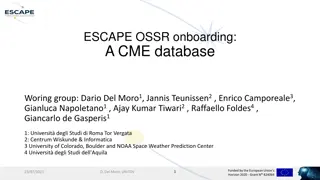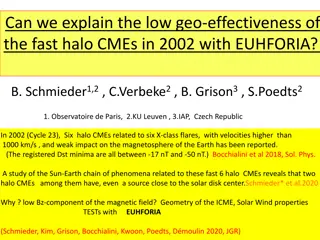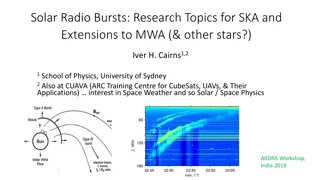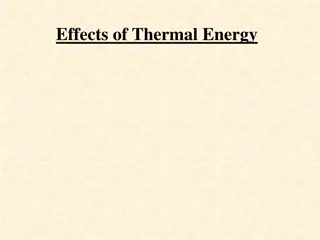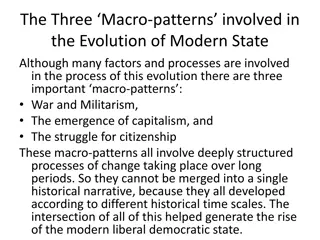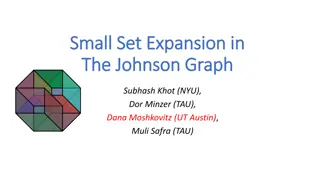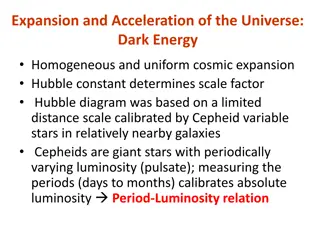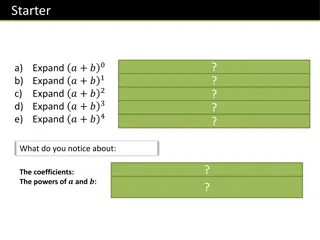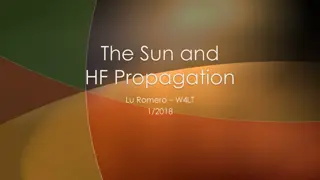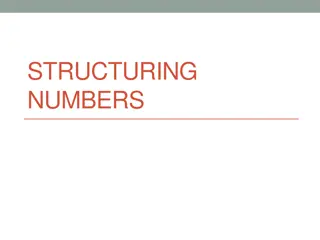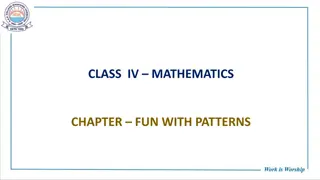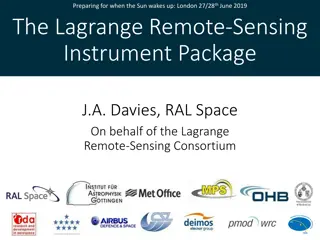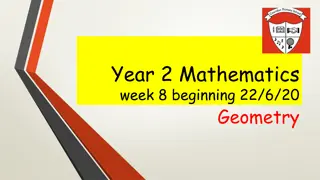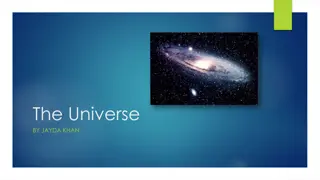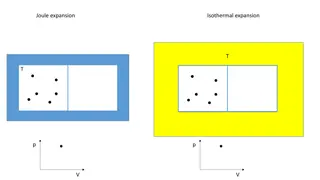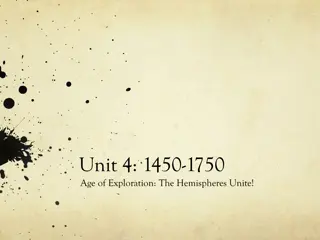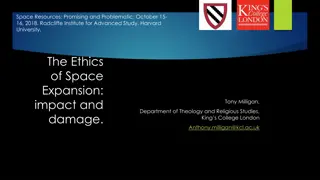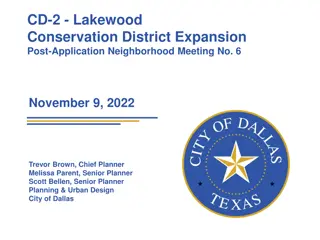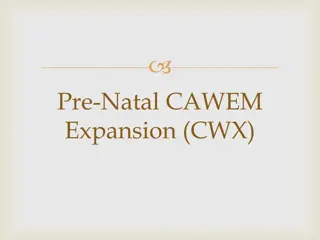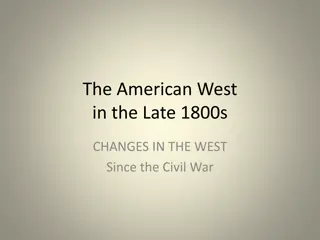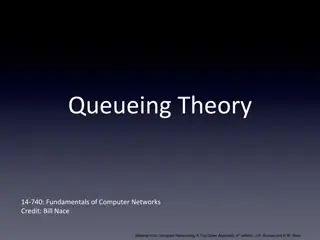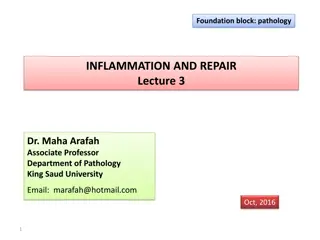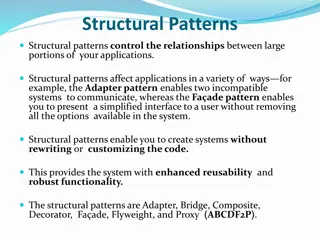Understanding CMEs in the Heliosphere: Expansion Patterns and Evolution
This project explores the expansion and evolution of Coronal Mass Ejections (CMEs) in the heliosphere, focusing on radial propagation and self-similar expansion. Through remote sensing and in-situ observations, the study aims to reconcile discrepancies between different data sources and enhance our understanding of CME behavior in space. The methodology involves analyzing images from spacecraft using tools like STEREOCat. Results show variations in angular width and velocity of CMEs, shedding light on their complex dynamics.
Download Presentation

Please find below an Image/Link to download the presentation.
The content on the website is provided AS IS for your information and personal use only. It may not be sold, licensed, or shared on other websites without obtaining consent from the author. Download presentation by click this link. If you encounter any issues during the download, it is possible that the publisher has removed the file from their server.
E N D
Presentation Transcript
How CMEs Expand in the Heliosphere By Aaron Williams Mentor: Teresa Nieves-Chinchilla
Motivation How does the CME evolve in the Interplanetary medium? Radial propagation Self-similar expansion Introduction This part of a project .. NSF ST (Solar-Terrestrial): Collaborative Research: Reconciliation between in- situ and remote. What is a CME? - Remote sensing observations analyses
What are CMEs A Coronal Mass Ejection(CME) happens when giant clouds of plasma are ejected from the Sun. CMEs have been observed for years but they are still not fully understood. Scientists know that the Sun s magnetic field is a factor in there creation.
Methodology Based on Inner Heliospheric Evolution of a stealth CME derived from multi-view imaging and multipoint in-situ observations, by Nieves- Ch. et al. 2012. Using STEREOCat Tool STEREOCat is a tool that takes CME pictures taken by spacecrafts like SOHO and determines there speed and angular width .
What We Expected radial propagation of the CMEs would be constant Self-similar expansion
CASE - non constant angular width Velocity as a Function of Time CME 2014-06-22 173 600 Velocity (km/s) 500 400 STEREO A CORO 2 300 200 Position Angle as a Function of Time STEREO B CORO 2 100 0 3D 50 Position Angle (deg) Tme (hr) 40 30 STEREO A CORO 2 20 STEREO B CORO 2 10 3D 0 3:09:15 3:24:00 3:39:00 3:54:00 4:09:15 Time (hr)
CASE - constant angular width Velocity as a Function of Time 600 CME 2013-03-17 076 500 Velocity (km/s) 400 Position Angle as a Function of Time 300 STEREO CORO 2 200 STEREO B CORO 2 3D 100 45 44 Position Angle 0 43 42 41 STEREO A CORO 2 40 Time (hr) STEREO B CORO 2 39 38 3D Time (hr)
Results Difference (deg) 7 2 7 3 6 2 0 0 6 Constant (Y/N) CME 2014-06-29 180 STA CORO 2 # of Point STA CORO 2 = 9 SOHO C3 = 8 STA CORO 2 = 8 SOHO C3 = 5 SOHO C2 = 5 STA CORO 2 = 8 STB CORO 2 = 8 3D = 8 STB CORO 2 = 5 STA CORO 2 = 5 STB CORO 2 = 5 3D = 5 SOHO C3 = 5 STA CORO 2 = 6 STB CORO 2 = 6 3D = 6 SOHO C2 = 3 STA CORO 2= 13 SOHO C3 = 4 SOHO C2 = 3 STA CORO 2= 10 STB CORO 2= 10 SOHO C3= 6 N Y N Y N Y Y Y N 2013-01-06 016 SOHO C2 2013-03-17 076 STA CORO 2 2013-04-14 134 STB CORO 2 0 0 0 2 2 2 4 2 2 14 3 1 8 0 Y Y Y Y Y Y Y Y Y N Y Y N Y 2013-07-04 186 STB CORO 2 2013-07-18 199 SOHO C2 2013-08-31 243 SOHO C2 2013-10-02 275 STA CORO 2
0 0 0 2 0 0 0 0 3 Y Y Y Y Y Y Y Y Y STA CORO 2 = 4 STB CORO 2 = 4 3D = 4 SOHO C3 = 8 STA CORO 2 = 6 STB CORO 2 = 6 SOHO C3 = 6 SOHO C2 = 3 2013-10-08 282 SOHO C2 2014-04-20 111 SOHO C2 2014-06-22 173 STA CORO 2 2012-01-21 021 STA CORO 2 STA CORO 2 = 5 0 Y STA CORO 2 = 5 STA CORO 2 = 3 STB CORO 2 = 3 STB CORO 2 = 8 SOHO C3 = 7 STA CORO 2 = 5 STB CORO 2 = 5 3D = 5 238 0 0 Y Y 2012-01-22 022 STA CORO 2 2013-03-12 072 STB CORO 2 2 0 5 6 5 Yes = 32 No = 9 Y Y N N N 2014-06-22 173 STA CORO 2 TOTAL
Conclusion Non-constant radial propagation and self- similar expansion in some CME events Something is causing the CMEs to expand at a non-constant rate This is important to space weather forecasters


